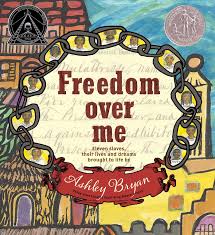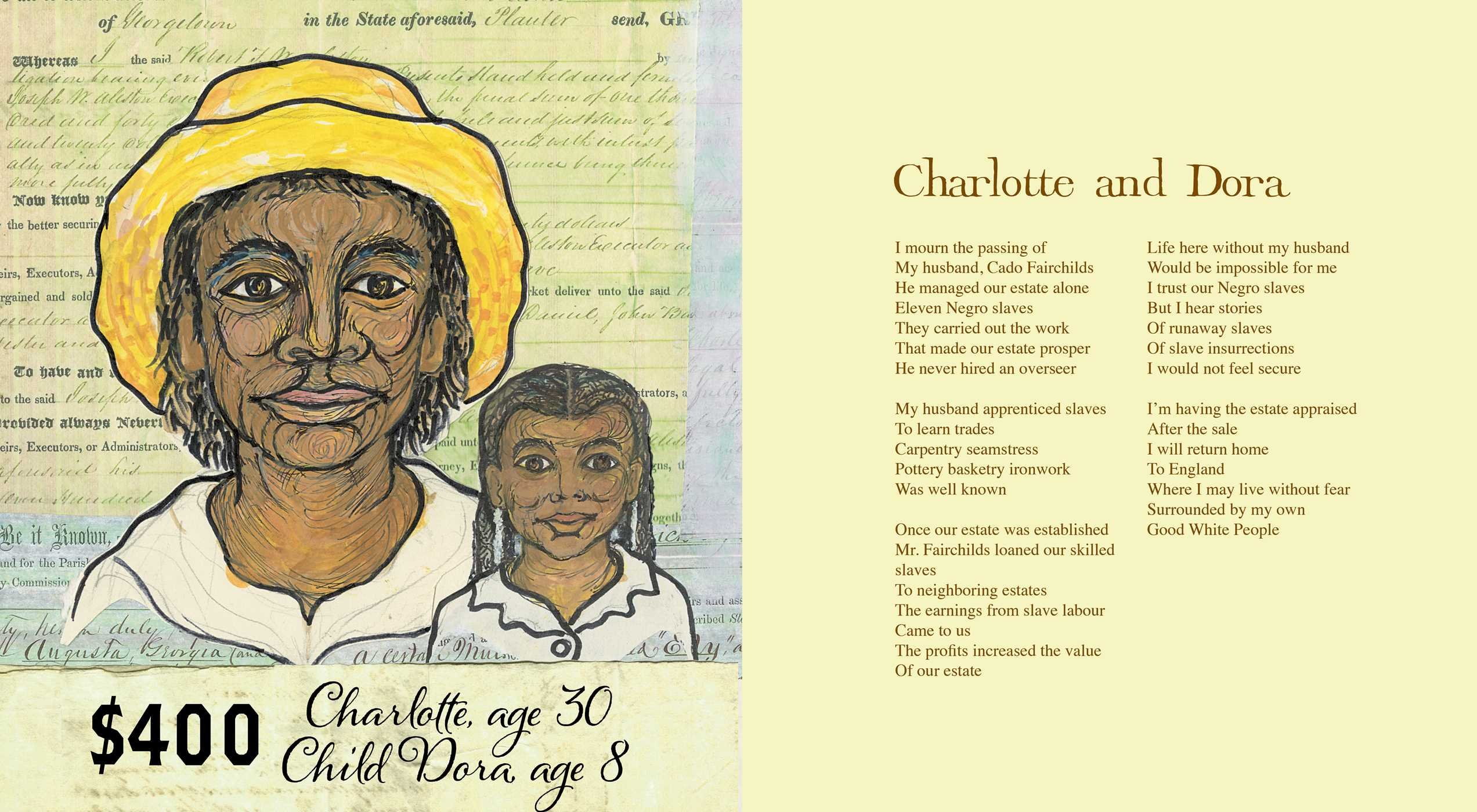Freedom Over Me
Freedom Over Me is a book written and illustrated by Ashley Bryan. This book is a collection of fictional autobiographies of real men, women, and children who lived in the American South during the time of slavery. It was named a Newbery Honor book in 2017, also Coretta Scott King Author Honor Book and Coretta Scott King Illustrator Honor Book. [1]
Summary
In an author’s note at the end of this book, author/illustrator Ashley Bryan describes a document he owns which lists the appraised value of the possessions of a plantation family in 1828. Alongside the hogs, cotton, and cows are the names of eleven human beings. The Author has painted portraits of each of these eleven slaves as he imagines them and in free verse imagines a story for each one of them about their hard work on the Fairchild plantation and about their dreams of their homelands and of freedom. The first two-page spread of each entry pairs a first-person narrative with a striking portrait of the slave, layering the painting on top of a collage of newspaper clippings and documents about slavery from the time. The slaves’ stories of their former lives and of their jobs and relationships on the Fairchild plantation are set quite literally against a backdrop of the history of slavery in the United States. [2]
Pros
This book explains that slaves also have dreams of doing with talents they have. The second set of pages for each slave appears in full color and shows the speaker fully immersed in a caring community. The speakers’ talents include carpentry, music, sewing, cooking, and more. After including the price under each slave’s picture, The Author offers a final tally for the completed sale, humans, livestock, and goods: $3,476.05. [3] The Author lovingly restores their humanity and dignity, giving them ages, true African names, relationships, talents, hopes, and dreams. Here is the account of eleven human beings, all of whom are aware of what they contribute to the Fairchilds plantation and, more importantly, what they would like to contribute to the world. Each slave is afforded two double-page spreads of poetry: the first spread serves as his or her introduction; the second is devoted to his or her dreams. We meet Peggy, the Fairchilds’ cook, who is praised by the Fairchilds for the spices she adds to meals at the Big House. In “Peggy Dreams,” she remembers her life in Africa and reveals that she’s proud of her ability to heal injured fellow slaves through her work with roots and herbs. Bacus is known for his metalwork in fencing the Big House, but his dream admits that the pounding of the metal is “an outlet for anger, for rage…a blow for justice…a cry for respect.” The art is just as intentional. Facsimiles of the historical document serve as background for each slave’s introduction page, portraits of their faces taking precedence as they gaze out at the reader. The portraits are etched in a manner similar to wood carvings, suggesting the mask each slave wears for day-to-day life on the plantation. In contrast to the dry, parchment-like tones of the introductions, the dream spreads are in gloriously brilliant colors, as bold as the aspirations of the individuals themselves. [4]
References
- ↑ Freedom Over Me. Goodreads. Retrieved January 29 2021.
- ↑ Freedom Over Me. Storypath. Retrieved January 29 2021.
- ↑ Freedom Over Me. Kirkus Review. Retrieved January 29 2021.
- ↑ Njoku, Eboni.Review of Freedom Over Me: Eleven Slaves, Their Lives and Dreams Brought to Life. The Horn Books. 2 November 2016. Retrieved January 29 2021.

